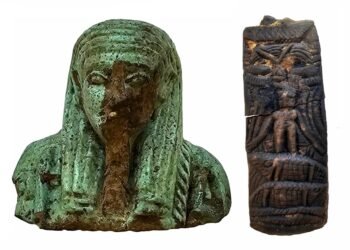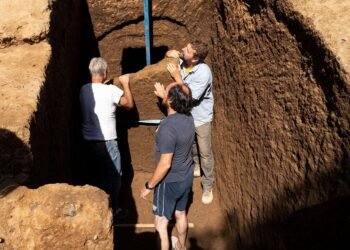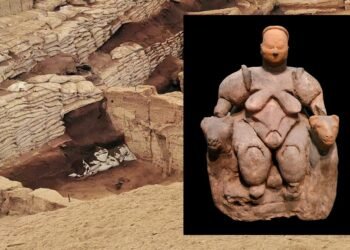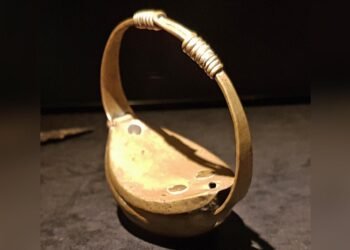Two ancient circular stones have been unearthed at Castelliere di Rupinpiccolo, an ancient hilltop fortress in the Italian province of Trieste. One of these stones is believed to potentially represent one of the oldest celestial maps ever discovered in Italy. This discovery was announced in a press release by the Italian National Institute for Astrophysics (INAF).
The hillfort, used as a defensive structure from 1800 to 1650 BCE until 400 BCE, is one of the most significant castles in the Karst area and the first to be excavated. The recently unearthed stones, each approximately 50 centimeters in diameter and located near the hillfort’s entrance, have become the focal point of research conducted by a collaborative team from INAF, the Ca’ Foscari University of Venice, and ICTP.

One stone, identified by Paolo Molaro from INAF and the collaborative team, represents the sun, while the other, considered by researchers as potentially one of the oldest celestial maps found in Italy, is adorned with engravings dating back around 2,500 years. The celestial map, published in the German astronomy magazine Astronomische Nachrichten, features 29 meticulously carved markings that precisely correspond to the constellations of Scorpius, Orion, the Pleiades, and Cassiopeia.
According to Molaro, the team’s analysis suggests that the carvings were likely crafted by the same individual using a hammer and a rudimentary metal chisel with a 6-7 mm tip. Remarkably, the accuracy of the engravings is evident in the representation of Theta Scorpii, a star now obscured from sight due to its low position on the horizon. The researchers utilized the Stellarium program to simulate the night sky and found that this star was observable from the ancient hillfort around 400 BCE.
However, one of the most intriguing aspects of the discovery is the 29th engraving on the celestial map, which does not align with known celestial models. Researchers propose the possibility that it represents a supernova or a “failed supernova,” transient phenomena that appeared suddenly in the night sky in ancient times. This unique engraving prompts speculation that tracing its focal point in the current night sky could unveil a black hole left behind by the ancient supernova explosion.
Paolo Molaro, reflecting on the initial skepticism surrounding the discovery, stated, “My first reaction was incredulity, given that the southern part of Scorpio is just above the horizon in our latitudes. But then, discovering that the precession of the equinoxes raised it by about 10-12 degrees and the impressive coincidence with the constellation, I began to delve deeper into the question.”
Federico Bernardini, an archaeologist from Ca’ Foscari University of Venice and ICTP, said: “All but one overlap with the stars of Scorpius, Orion, the Pleiades, and probably Cassiopeia. This is an overlap with very high statistical significance, the p-value is much lower than 0.001. In other words, it is highly unlikely that the arrangement of those signs was purely the result of chance,”
The discovery challenges previous notions about the oldest known celestial map, traditionally attributed to the Nebra disk, a bronze artifact from Germany dating to around 1600 BC. While the Nebra disk is considered a symbolic representation, the Rupinpiccolo celestial map offers a more detailed depiction of the night sky, pushing the timeline of accurate celestial mapping further back in history.
The study, as reported in Astronomische Nachrichten, raises questions about the identity of the ancient stone’s engraver, the inhabitants of Castelliere di Rupinpiccolo, and the broader astronomical knowledge of protohistoric Europe.
























